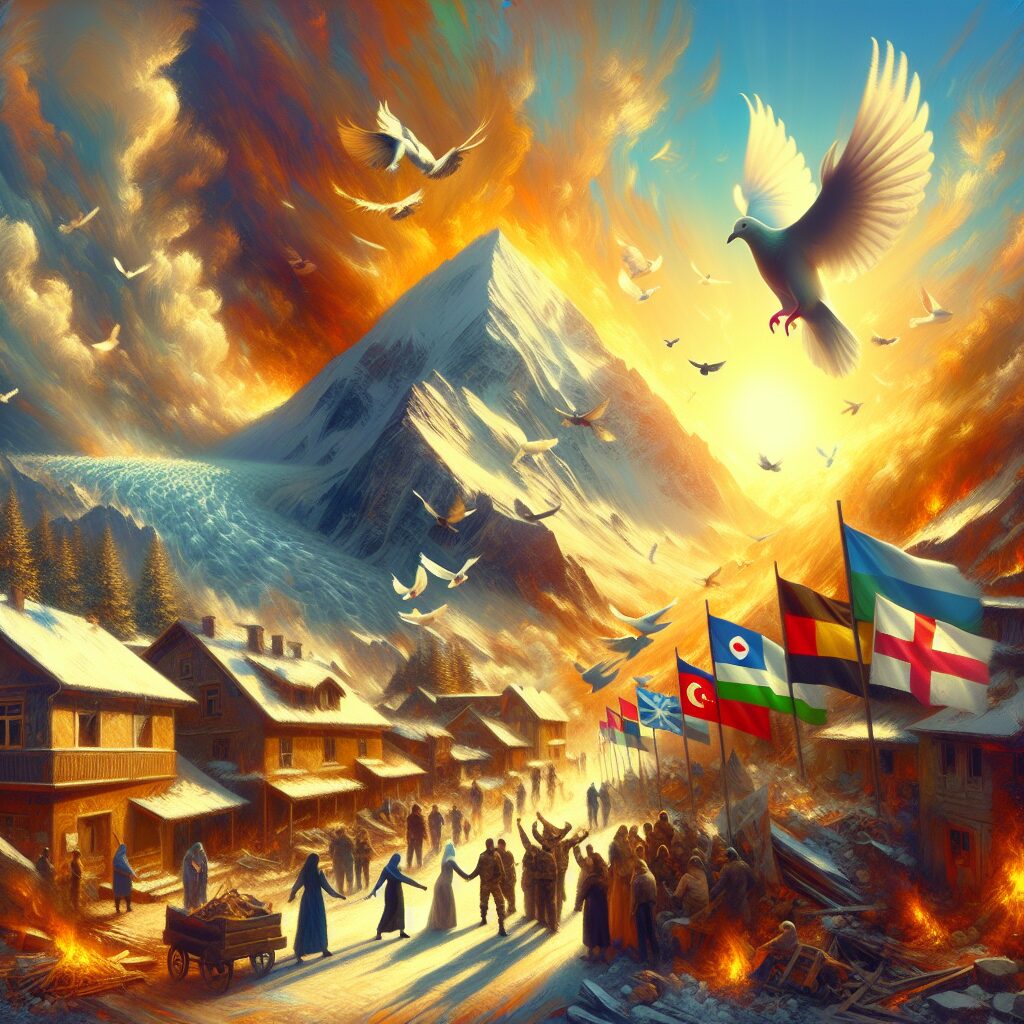Imagine the serene beauty of a Swiss mountain village, nestled quietly beneath the watchful peaks of the Alps. This idyllic scene was tragically transformed on a day that started like any other but ended with nature's formidable power reshaping lives and landscapes. On May 29, 2025, a massive avalanche of rock and ice descended from a glacier, burying parts of a quaint mountain village and leaving a community in shock and a man missing.
This catastrophe, as reported by Global News, wasn't just a rare event; it was a stark reminder of the changing planet we inhabit. The cause? A significant glacial collapse, indicative of the increasing instability within the Alpine regions. This alarming trend is often linked to the broader implications of climate change, which affects glacier mass and structure, thus increasing the risk of such disasters.
In the immediate aftermath, Swiss emergency teams launched a rigorous search and rescue operation, hoping against hope to find the missing 64-year-old man. The village, now scarred by this calamity, has seen its residents evacuated as geologists and climate experts huddle to assess the ongoing risks. Could there be more collapses? The anxiety is palpable as the community waits on tenterhooks.
This event serves as a poignant example of how climate change is not a distant threat but a current crisis. Glaciers, those ancient titans of ice and snow, have been retreating and thinning at unprecedented rates. This not only leads to the loss of iconic landscapes but also triggers a cascade of environmental consequences including altered water supplies and increased natural hazards like the one witnessed.
The story of the Swiss village is a call to action. It implores us to acknowledge the interconnectedness of our actions and the environment. It's a stark reminder that sustaining our planet isn't just about reducing emissions but also about adapting our settlements and practices to a changing climate.
What can we do? Supporting and advocating for environmental policies that aim to mitigate climate change is crucial. Equally important is backing research and monitoring of glaciers to better predict and prepare for future risks.
Let’s use this moment not just to reflect but to act. Our engagement in environmental conservation could be what tips the scales toward a safer, more stable climate system. As we watch the efforts to rebuild and recover in Switzerland, let us remember that our collective action can indeed make a difference. How will you contribute to the change needed to prevent such tragedies from becoming the norm?
FAQ
Q: What causes glaciers to collapse?
A: Glacial collapses are primarily driven by factors like temperature increases, which cause the ice to melt and destabilize. Geological factors and water accumulation beneath the glacier can also contribute to such collapses.
Q: How does the melting of glaciers affect communities?
A: Communities, especially those in proximity to glaciers, face increased risks of floods and avalanches. There's also the broader impact on water sources that depend on glacier melt, affecting agriculture and daily living.
Q: What can individuals do to help mitigate climate change?
A: Individuals can reduce their carbon footprint by using energy more efficiently, choosing sustainable transportation options, and supporting climate-friendly policies and businesses.
#ClimateAction #EnvironmentalConservation #AlpsTragedy #SustainableLiving #GlacierSafety
